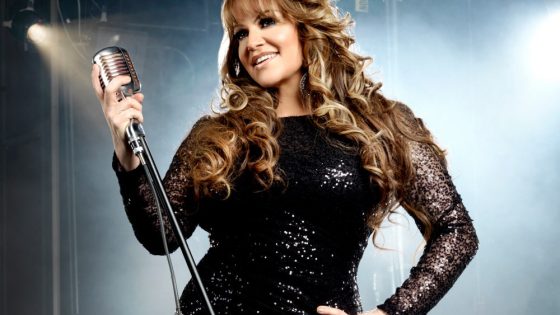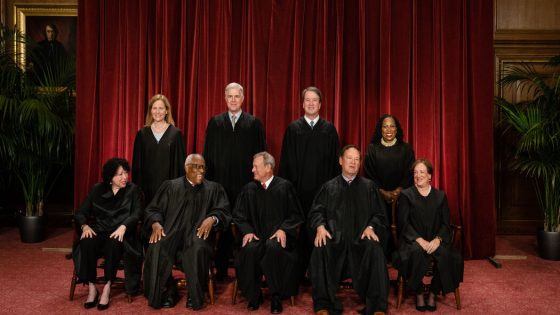Though she perished in a plane crash in 2012, Jenni Rivera is still changing the face of Mexican music.
As the first genuine female superstar to emerge out of Mexico’s century-old banda genre, Rivera cut an entirely unique figure throughout the early 2000s, imbuing one of North America’s most male-dominated, storied music genres with a spirit that was unabashedly feminist and entirely modern. A student of the music’s heritage who steadfastly refused to abide by its strictures, her list of firsts is extensive: she was the first female regional Mexican music star to sell out Los Angeles’ Staples Center (now Crypto.com Arena), the first woman to win Mexico’s Premio Lo Nuestro award for Banda Artist of the Year and the first Latin artist to earn a dedicated exhibit at the Grammy Museum, selling more than 15 million albums in her lifetime.
Since then, Rivera’s influence has only continued to spread, with posthumous releases, a bestselling posthumous memoir, a hit TV reality series and an authorized biopic leading a wave of rediscovery that will culminate with a star on the Hollywood Walk of Fame on June 27.
Like several of Mexican music’s transformational female artists — the Madrid-born Rocío Dúrcal and the Texan Selena Quintanilla, most obviously — Rivera was not born in Mexico. Raised in a musical family in Long Beach, Rivera was a teenage mother who overcame a truly horrific early marriage, gradually launching a singing career while employed as a real estate agent. She cultivated an audience through grassroots marketing and word-of-mouth, and by the time she signed to a major label, she was already a sensation-in-the-making.
For all the power of her voice and the charisma of her performances, it was Rivera’s unmistakable swagger that made her such a touchstone for a generation of fans. And that swagger was obvious from the very beginning: listen to “La Chacalosa,” the Rivera-penned opening track from her 1994 debut album of the same title, and hear the twentysomething inhabiting the persona of a gold-pistol-wielding drug trafficker’s daughter with a commitment that’s equal parts convincing and cheeky. Her mainstream breakthrough, 2005’s “Parrandera, Rebelde y Atrevida,” inspired at least one critic to liken her to a corrido-belting Alanis Morissette. But Rivera’s brand of empowerment was more in line with the American tradition of take-no-shit women country singers, and she truly hit her stride as a two-fisted spokeswoman for a woman’s right to be self-sufficient, autonomous, boisterous, messy and human.
She sang about domestic violence, infidelity, single motherhood and financial struggles, but she also sang with equal fervor about sloughing off those burdens with a long night at the bar. Some traditionalists were scandalized by the brashness of her persona early on, but by the time she was on the radio bragging about the size of her “Ovarios” in 2009, the doubters were largely drowned out by the fans who took the lyrics of her bad-girl anthem “Las Malandrinas” as a mantra.
As her stardom grew through the late 2000s, she began to amass an empire that rivaled that of the era’s hip-hop moguls. She launched (the still-thriving) Jenni Rivera Fashion, and a “The Osbournes”-style reality TV show called “I Love Jenni”— vaulting her to a level of Stateside name recognition that few banda singers could have dreamed of.
Indeed, for all of Rivera’s importance as a trailblazing woman in a male-dominated space, her role in bringing musica mexicana into the American mainstream is difficult to overstate. Though mariachi, banda, ranchera and cumbia music has been omnipresent for decades in any U.S. city with a Spanish-language radio station, regional Mexican styles were often regarded with arm’s-length indifference (or worse) by much of the U.S. music industry, which typically preferred potential Latin crossover artists to bend over backwards to cater to Anglo tastes. Rivera was hardly averse to branching out — sometimes recording pop versions of her songs, and plotting an English-language project prior to her death — but she never compromised.
More than a decade after her death, that refusal to compromise has never seemed more prescient. Just last month, Spotify reported that streams of regional Mexican music grew 55% from 2022 to 2023, part of a larger trend that has seen a 440% increase since 2018. With acts like Grupo Frontera, Carin León, Junior H and (especially) Peso Pluma leading a new wave of regional Mexican music artists who can comfortably rub shoulders with English-language stars, these musical styles with roots in the nineteenth century have somehow never seemed more contemporary, or more adaptable. “La Diva de la Banda” understood this years before most.
Earlier this spring, Peso Pluma became the first regional Mexican artist to perform on the main stage at Coachella, with the close of his set featuring an onscreen tribute to the Mexican music legends who paved the way for his ascendancy. Rivera was the only woman onscreen.
Source Agencies




